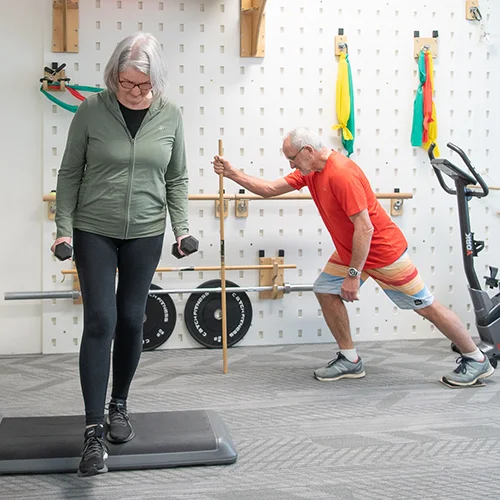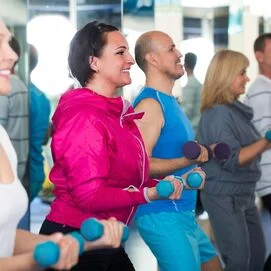Osteoarthritis is a disease of the entire joint, but most of all the articular cartilage covering the ends of the bones. It is the most common reason for people being less active as they age.
This can be due to:
Approximately 30% of the population between 50 and 70 years of age have problems related to osteoarthritis and the percentage increases in older age groups. The main joints affected are the hips, knees and hands. It is also common in younger and middle-aged people. Approximately 5% of people between 35 and 54 years of age have osteoarthritis. Many of these people have injured their joints earlier in life.

The diagnosis can be made by a Physiotherapist in our rooms and is based on the symptoms, the risk factors that are present and the clinical examination conducted.
The choice of treatment is guided by symptoms, function and not the x-ray changes, which are often over emphasised. Treatment is tailored to address the risk factors that can be modified.
This consists of Exercise, Weight Control and Education (lifestyle, diet and understanding what osteoarthritis is and is not).
Where the first line is not enough, it can be complemented by medication, manual therapies, braces and insoles. Sometimes, injections. In cases of very severe symptoms, surgery is considered.
The GLA:D® program is for anyone suffering hip or knee pain due to osteoarthritis, regardless of severity. The course has been proven to help to reduce pain, increase strength and improve quality of life.
GLA:D® is an education and exercise program developed by researchers in Denmark to help people with hip or knee osteoarthritis symptoms. Research proved the GLA:D® program to be the best option to manage osteoarthritis. Participants in the Danish Study reported better quality of life and delayed surgery for hip or knee osteoarthritis. This research continues today and you are welcome to participate.




An initial 40 minute consultation to examine your condition. This includes an introduction to the program and collecting data on your current level.
Two education sessions to teach you about Osteoarthritis, how exercise and diet improves osteoarthritis, and other factors that can help you maintain less pain and higher strength and fitness levels with osteoarthritis.
Twelve group exercise sessions over six to eight weeks.
Contact us to enrol and start your change for the better.
Yes, if your private health fund policy covers Physiotherapy Group Exercise you can claim for GLA:D treatment.
The class package costs $611 and is payable at the time of enrolment. This price includes classes and the educational sessions, and equates to $50.90 a session. The baseline individual assessment session is $102. Casual attendance to classes is $72 per class.
You do not need a referral from your Doctor, however, you may be eligible for a rebate from Medicare for some of the cost of the program, if deemed appropriate by your GP, or your private health insurer, DVA, Workcover and TAC.
Godt Liv med Artrose i Danmark
or
In English, Good Life with Arthritis Denmark.